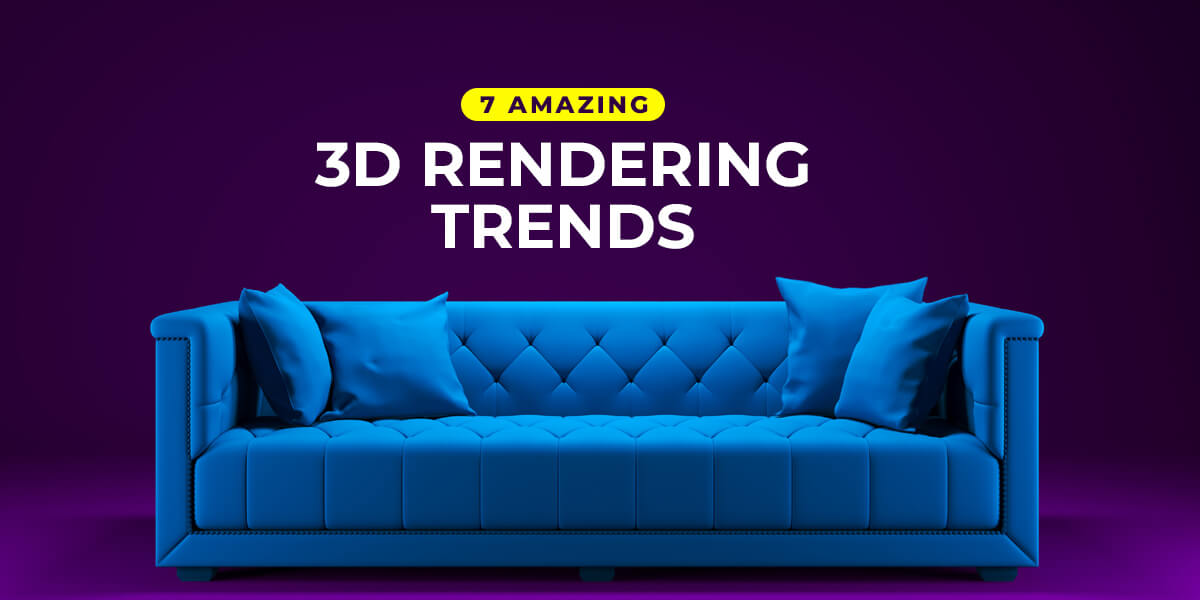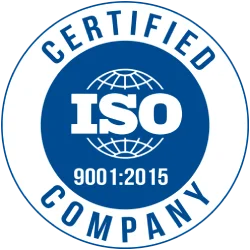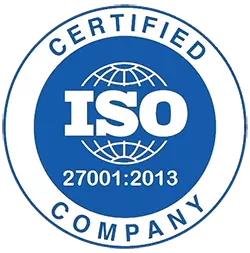7 Amazing 3D Rendering Trends for 2025 (with examples)
3D rendering is an absolutely vital part of the 3D visualization process. Without it, it would be hard for us to view the 3D models, scenes, etc., as intended. However, rendering, like most other technologies, is constantly changing (and improving) to suit the needs of the time. So, it is imperative for us to keep track and be aware of the latest trends in the 3D rendering field.

Let’s now look at some of the latest 3D rendering trends
-
Hybrid Rendering
Hybrid rendering is a process where both the CPU (central processing unit) and GPU (graphics processing unit) are used to render 3D visuals. It’s like driving a gas and electricity hybrid car.
CPUs and GPUs are both microprocessors that manage data. However, they don’t have the same job. A CPU is more like the brain of your computer and handles vital data processing. GPUs, on the other hand, render graphics and videos. They are not the same as a graphics card, but they do reside on the graphics card. GPUs were originally developed to hasten 3D processing, but now they also render lighting, shadows, and other complex 3D elements.
Unlike the CPU, which performs tasks sequentially, GPUs perform tasks simultaneously. GPUs are, therefore, much faster at rendering, as they can break down rendering tasks into much smaller operations.
Although CPUs can render more precisely, switching to GPUs makes for faster rendering of high-resolution scenes with complex lighting and multiple textures.
Some examples of hybrid rendering software:
- Chaos V-Ray (Prices starting at $42/m with 30-day free trial.)
- Redshift by Maxon (Prices starting at $22/m.)
- finalRender by cebas Visual Technology (Prices starting at $24.50/m. Free version is also available.)
-
Mobile and Cloud Rendering
Mobile rendering refers to using the processing ability of smartphone and tablet hardware to produce high-quality, realistic, and immersive 3D renderings of images and animation. To put it simply, it is the process of producing 3D renderings on smartphones and tablets.
On the other hand, cloud rendering (including online render farms) is where remote computing resources are used to render 3D graphics and animations. Normally, 3D rendering is done on a local computer. The main benefit of using cloud rendering is that it cuts down on the hardware, software, and maintenance costs otherwise associated with regular rendering.
With mobile and cloud rendering coming onto the scene, 3D artists can create and display 3D content on the go. Designers will have more freedom to work from anywhere in the world, without worrying about owning or carrying specialized, expensive hardware. Freelancers, remote teams, and small-budget studios will find these technologies pretty advantageous.
Some examples of cloud rendering service providers:
- Dassault Systemes
- iRender
- Fox Renderfarm
- SheeIpt(free for Blender)
-
Real-time Rendering
Real-time rendering is a technique where 3D images and animations are rendered immediately, or in real-time. Such a technique allows 3D artists to interact and edit images in real-time and it gives you quick results. Previously, high-quality rendering used up a lot of time, effort, and computational power. But now, the rendering performance has really seen a boost thanks to the emergence of real-time rendering engines like Unreal Engine and Unity.
Architecture, product design, gaming, and virtual reality (VR) are some of the industries that have been using real-time rendering and are really seeing the advantages.
It is important to note, however, that real-time rendering requires powerful hardware to work well. However, hardware continues to progress, so soon enough, real-time rendering will be vital for workflow and user experience.
Real world example of real-time rendering:
Rebirth is an animated short by Quixel and was made using Unreal Engine and real-world scans from the Megascans Icelandic collection. Put together by a team from VFX, games and ArchViz, the short asks existential questions of machine/human hybrids.
-
AI-powered 3D Rendering
AI-powered rendering is where realistic 3D imagery and animations are produced using machine learning algorithms. In 3D rendering, it is lighting that makes the 3D images and animations look photorealistic.
However, in the lighting process, complex calculations are used to produce more natural-looking visuals. AI-powered rendering optimizes the calculations for light interactions, reflections, and textures to get these realistic results quickly. AI tools also automate complex rendering procedures, provide real-time design exploration and generate realistic results with great speed and precision.
Artificial intelligence it can now produce hyper-realistic renders based on predefined parameters and accurate predictions of how natural light will interacts with a model or 3D scene. And, as AI keeps getting better, we can expect it to have smarter rendering solutions in the future.
AI-powered rendering software:
-
Ray Tracing for more Hyper-realism
Ray tracing is a method of achieving hyper-realistic renders by realistically simulating the lighting of a 3D scene or object. It is used to render reflections, refractions, shadows, and indirect lighting in a physically accurate manner. The way this technique works is that rays from each light source in a scene are bounced around to produce hyper-realistic lighting.
With such accurate lighting, you can create photorealistic textures and virtual environments. Ray tracing enhances image realism, which is super beneficial for video games, 3D visualization, visual effects, etc., which can improve the experience of immersive technologies.
Examples of software that can help with ray tracing:
- NVIDIA OptiX
- Chaos V-Ray
- In game engines like Unreal Engine combined with hardware like NVIDIA’s RTX GPUs.
-
Sustainable Design and Green Rendering
Plenty of businesses today are conscious of their impact on the global environment. In the 3D rendering industry, efforts are being made to adopt processes and technologies that are sustainable so their impact on the environment is reduced. It’s pretty common knowledge that rendering takes a lot of computational power, meaning it needs more energy consumption and a larger carbon footprint.
In specific industries, architects are using 3D technology to design buildings that have minimal negative environmental effects. Through what is being called as sustainable architecture, we can design buildings that make efficient use of materials, energy, and space. Cloud rendering and mobile rendering, meanwhile, allow us to easily render high-quality visuals with fewer resource requirements. Moreover, cloud rendering services are now utilizing renewable.
-
Holographic Rendering
Holographic rendering goes beyond displaying three-dimensional visuals (images or scenes) on traditional two-dimensional representations. Using special techniques and technologies, interactive and immersive 3D holograms are created, which can be viewed from different angles.
All angles of 3D object are made visible at the same time, much like a real-world object. Thus, it adds more realism and enhances storytelling in entertainment and experiential marketing. Holographic visuals are of great benefit to architecture, education, healthcare, entertainment, media, and product design.
Real world example:
HoloLamp (world’s first glasses-free hologram table)
HoloLamp is a glass-free portable augmented reality device that projects optical 3D illusions directly onto the real-world environment.
So, what did we learn?
Today, the main industries driving the growth of the 3D rendering market are:
- Architecture
- Design
- Real estate and others.
Thanks to the growing demand, the service providers in the market are also keeping things fresh by developing new and exciting ways to render 3D visuals. From what have just seen, you could say that the overall themes of the latest 3D rendering trends are sustainability, speed, and hyper-realism. These are what matter most to clients, as well as the 3D rendering service providers.
So, stay on the frontlines of new rendering techniques and you can stay unique and maintain your competitive edge.
Contact Us

